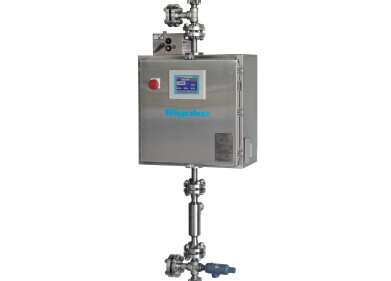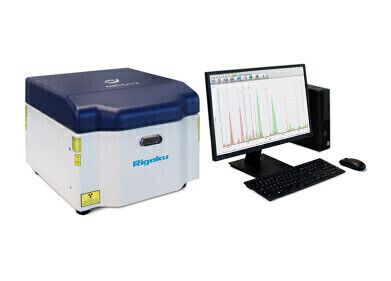Sulphur analysis
A Complete Guide to Sulphur in Fuel
Dec 11 2021
Sulphur is a naturally occurring component in crude oil and one of the most important parameters used to measure the value, suitability and environmental credentials of petroleum products. Unless removed, all gasoline and diesel fuels contain sulphur, with concentrations varying depending on the characteristics of the product.
Below, we cover everything you need to know about sulphur in fuel, from its chemical properties to the environmental concerns associated with the chemical element.
What is sulphur?
Sulphur is one of 118 known chemical elements and is represented by the atomic symbol S. It has the atomic number 16 and is the 10th most common element in the world, according to studies conducted by the Jefferson National Linear Accelerator Laboratory. Here are some more key facts on sulphur:
- Room temperature phase: Solid
- Atomic weight: 32.065
- Density: 2.067 grams per cubic centimetre
- Boiling point: 444.6 degrees Celsius
- Melting point: 115.21 degrees Celsius
Sulphur in the Bible
The chemical element is so abundant that it even receives multiple mentions in the Bible, including the following passage from Psalm 11:6 - “On the wicked he will rain fiery coals and burning sulphur; a scorching wind will be their lot.”
The pungent aroma and mineral nature of sulphur, combined with its long-standing association with volcanoes and bubbling hot springs, explains why the religious text lumps it in with concepts like fire, brimstone and wrath.
Sweet vs sour crude oil
Now we know more about sulphur and its place on the periodic table, let’s dive into how the chemical element effects crude oil. The terms “sweet” and “sour” are used to describe sulphur concentrations in crude oil and petroleum products. Sweet has low levels of sulphur while sour crude has moderate to high levels.
The New York Mercantile Exchange classes petroleum containing less than 0.5% sulphur as sweet and products with higher concentrations as sour. Most oil and gas reservoirs contain between 1 to 5% sulphur, meaning oil must go through refining processes to remove the chemical element and be classed as sweet.
-
Light vs heavy crude oil
Other key parameters used to classify crude oil include density and TAN. Density refers to how fast or slow liquid petroleum flows at room temperature, with the terms “light” and “heavy” used to describe this trait. Light oil has low density and flows freely, while heavy oil is viscous and slow moving.
API gravity, which measures how light or heavy an oil is compared to water, is another index used to determine crude density.
-
Total acid number (TAN)
TAN indicates the total acid number, which is established by measuring how much potassium hydroxide is needed to neutralise acids. Most refiners prefer oil with a low TAN count as it minimises the risk of corrosion.
Where oil benchmarks stand on the sulphur scale
When exploring the importance of sulphur, density and TAN it’s worth referring back to WTI, Brent, and OPEC, the three most widely recognised benchmark oils.
-
West Texas Intermediate (WTI)
As the name suggests, WTI is produced in the United States. It’s generally considered sweet and light, with sulphur content of 0.24% and API gravity of 39.6.
-
Brent
Brent oil is extracted from the North Sea and is also considered a high-quality light and sweet product. With a sulphur content of 0.37% it’s slightly less sweet than WTI. Brent has API gravity of 38.3.
-
OPEC
Oil produced by OPEC (Organisation of Petroleum Exporting Countries) tends to be heavier and sourer than WTI and Brent.
In comparison, the heavy and sulphur-rich oil extracted from Canadian tar sands in Alberta contains a huge 20% sulphur. Other fields in the Middle East extract oil with sulphur concentrations of up to 40%.
Sulphur and the refining process
Refiners are especially concerned with sulphur concentrations as it determines whether a product is suitable for the equipment. Sour crude with high sulphur concentrations is generally harder and more expensive to product, calling for specialised equipment and extra refining steps.
Oil assays play a key role in characterising crude oil and giving refiners a complete breakdown of how much sulphur, as well as other chemical elements, it contains. They allow refiners to make informed decisions that maximise efficiency, boost profits and safeguard expensive equipment and machinery.
Why sulphur concentrations matter
So, why are refiners and governments so concerned with sulphur concentrations? Read on to discover why sulphur concentrations matter:
-
Operational efficiency and profits
Sulphur-rich crude is generally unpopular with refiners as a build-up of compounds can deactivate catalysts used during the production process. High sulphur levels can also fast-track the corrosion of refining equipment, as well as damage pipelines and storage tanks. Sulfidation corrosion generally occurs at temperatures over 260 degrees Celsius. Naturally, improving efficiency and minimising damage to equipment correlates with increased profits.
-
Environmental concerns
Despite being a naturally occurring chemical compound, sulphur can have dire environmental consequences. When oil is burned, sulphur reacts with oxygen to create emissions known as sulphur dioxide, which is classes as a pollutant by the Environmental Protection Agency.
This poisonous gas can then fuse with air and water to create sulphuric acid, the key constituent of acid rain. This type of sulphur-rich precipitation can accelerate deforestation, acidify waterways, compromise agricultural crops, contaminate drinking water sources and kill aquatic life.
Sulphur dioxide is also classed as an indirect greenhouse gas, as it can form aerosols when paired with elemental carbon. Sulphur can also compromise the effectiveness of emission control systems, making sour fuels a danger to air quality.
-
A threat to human health
As well as having a negative environmental impact, sulphur dioxide can damage the human respiratory system, irritate the respiratory tract and compromise lung function. As well as aggravating conditions like bronchitis and asthma, it can irritate the eyes and skin.
Sulphur limits in the UK and around the world
Given the various risks associated with sulphur, governments around the world have taken steps to regulate the chemical compound. In January 2011, the European Fuel Quality Directive decreed that all non-road mobile machinery must be powered by fuel containing less than 10 milligrams of sulphur per kilogram. In 2010, updates to the British Standard BS 2869 for “red diesel” used to power off-road vehicles such as bulldozers and cranes also slashed sulphur limits to 10 milligrams per kilogram.
The maritime sector is another industry taking big steps to reduce sulphur emissions. In January 2020, the International Maritime Organisation (IMO) banned the use of fuels containing sulphur concentrations of 0.5% or higher. This marked a significant reduction from the previous limits of 3.5% now.
The underlying goal is to reduce air pollution and minimise the industry’s environmental impact. Oil majors such as Royal Dutch Shell and BP were quick to comply and launch a new range of low-sulphur fuels that meet the strict IMO requirements.
What happens to sulphur stockpiles?
Most refineries rely on sulphur recovery units to extract the chemical compound from crude oil and prevent traces from being released into the atmosphere. So, what happens to the elemental sulphur stockpiles that build up at oil and gas refineries?
A large percentage is used to make sulphuric acid, a valuable product used to manufacture everything from fertilisers, insecticides and industrial chemicals to textiles, paper, glass and cosmetics. Sulphuric acid is also coveted by sewage treatment plants, as well as the metal, mining, wood-pulp and leather processing industries.
Repurposing sulphur into eco-friendly products
Beyond conventional applications, scientists are exploring sustainable and eco-friendly uses for sulphur. With sulphur oversupply issues expected to plague the market over the coming years, a recent paper published in the journal Waste Management aims to “understand current sulphur oversupply, not as a problem, but as an opportunity to develop more sustainable technologies.”
In another article titled ‘Alternative and Potential Uses for the Sulphur By-products Produced from Oil and Gas Fields’, the authors explore alternative applications such as road construction, medicinal products, waste treatment, hydrogen production and maize production.
Sulphur and solar energy
Storing solar energy is an exciting application introduced by the authors, who cite a recent project pioneered by the Karlsruhe Institute of Technology (KIT) in Germany. Engineers used a contained sulphur-sulfuric acid cycle to store solar power on an industrial scale and create a renewable source of energy that’s both eco-friendly and sustainable.
“This method is performed through a solar absorber integrated with a thermochemical solar power storage system based on elemental sulphur and sulfuric acid,” reads the report. “The focused sunlight of the solar power plant supplies the process heat with the energy and temperature needed to close the sulphur cycle, converting the sulfuric acid back into sulphur dioxide, in the presence of the appropriate catalysts.”
Want to know more about how advanced technologies are used to detect and quantify sulphur compounds in petroleum products such as LNG? Writing on behalf of Scion Instruments, author Ashleigh Mellor explores the role of chromatography in ‘Analysis of Sulphur Compounds in Various Liquefied Petroleum Gases’.
Digital Edition
PIN 25.6 Buyers' Guide
January 2025
Buyers' Guide Directory - Product Listings by Category - Suppliers Listings (A-Z) Articles Analytical Instrumentation - ASTM D7042: The Quantum Leap in Viscosity Testing Technology -...
View all digital editions
Events
SPE Hydraulic Fracturing Technology Conference and Exhibition
Feb 04 2025 The Woodlands, TX, USA
Feb 05 2025 Guangzhou, China
Trinidad and Tobago Energy Conference 2025
Feb 10 2025 Point Lisas, Trinidad
Feb 11 2025 Lagos, Nigeria
Feb 13 2025 Manama, Bahrain



















